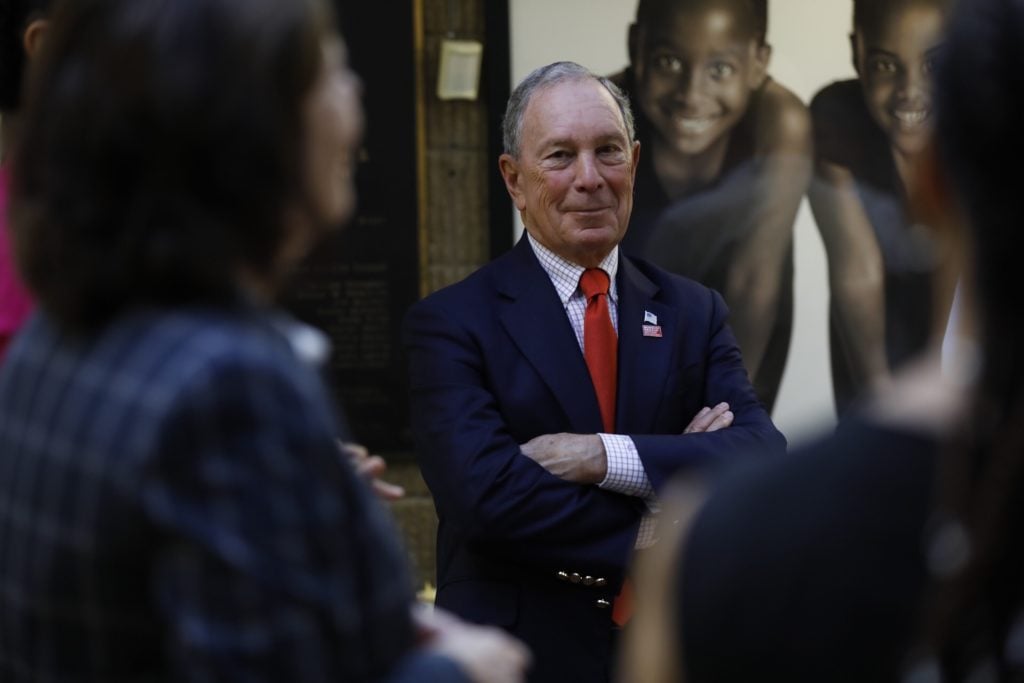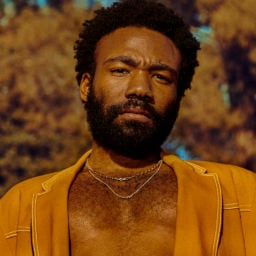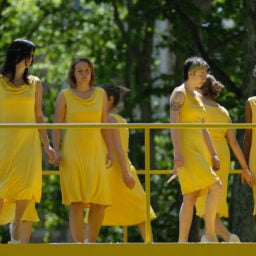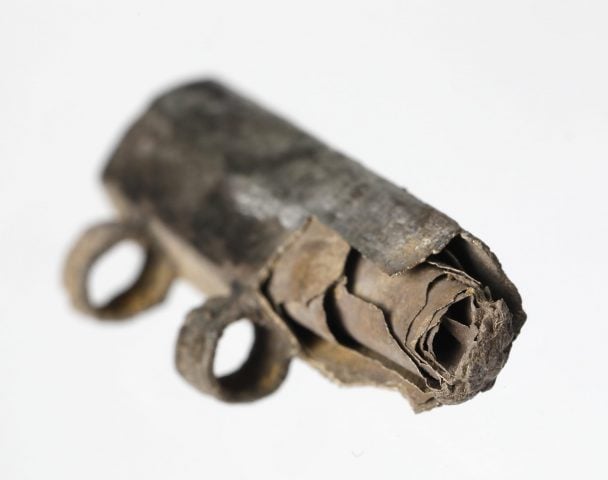Former New York Mayor and multi-billionaire Michael Bloomberg has flirted with the possibility of running for president for years. Now he’s filing paperwork as a Democrat in some early-primary states, and he’s gone so far as to buy a $100 million blitz of anti-Trump online ads. He’s also become something of a kingmaker in Democratic races, having sunk $100 million into 2018 Democratic races, with some success: Democrats won 21 of the two dozen House races he helped to fund.
Mayor Mike’s generosity with arts organizations is legendary. Bloomberg Philanthropies has for years invested many millions of dollars into arts initiatives throughout the country, in cities big and small. Bloomberg is apparently determined to end up penniless. He says he is “a big believer in giving it all away,” and that “the best financial planning ends with bouncing the check to the undertaker.”
That attitude could make Bloomberg the most pro-art president in recent memory.
During his administration, New York City became the largest single funder of arts and culture in the United States, investing upward of $3 billion during his three terms, from 2002 to 2013.
On a personal level, Bloomberg also holds an art collection that encompasses historical material (works from the Hudson River School) as well as twentieth-century examples, including a Roy Lichtenstein sculpture. Still, his philanthropic arts activity appears to be more of a priority for him than building a private collection.
Not everyone is completely enamored with Mayor Mike. It was only this week that he apologized for the “stop-and-frisk” policing policies he supported while he was overseeing the New York Police Department, which had a devastating effect on communities of color. Others say he didn’t sufficiently protect artists and arts organizations from galloping gentrification.
Under Bloomberg’s watch the state of New York City’s public housing agency deteriorated drastically and the fallout still continues today. One recent New York Times report noted that the housing inspection failures under Bloomberg only surfaced years after the fact, resulting in the appointment of a federal monitor. “Mr. Bloomberg hasn’t been pressed on his role in the crisis, but a presidential campaign would probably change that,” the report says.
What a Bloomberg presidency would look like is clearly up for debate. On the other hand, here are ten reasons to think the arts, at least, would get robust support from a Bloomberg administration.
Bloomberg Set a New Tone When He Took Over From Giuliani
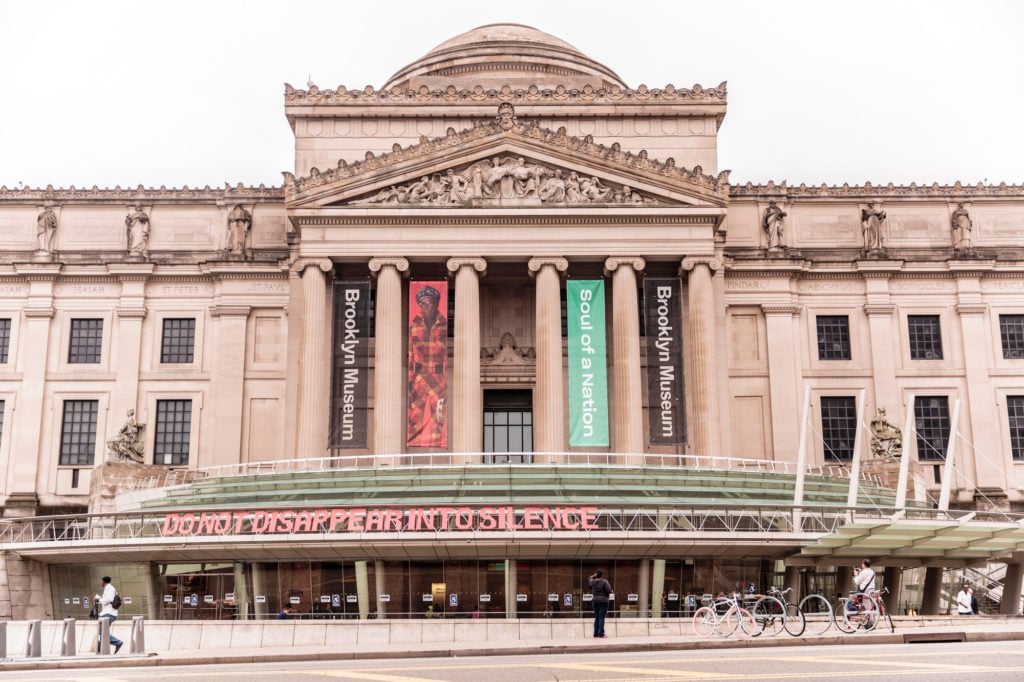
The Brooklyn Museum – August 9th, 2018 – Photography Coverage Provided By: KOLIN MENDEZ | © 2018 KOLIN MENDEZ PHOTOGRAPHY | www.kolinmendez.com
Bloomberg’s inauguration as Mayor was a relief to arts advocates, who had seen his predecessor, Rudy Giuliani, attempt to revoke funding from the Brooklyn Museum over edgy works in the museum’s “Sensation” exhibition. Following that show, Giuliani created a “decency commission” to revise standards for what could be shown in museums; Bloomberg dissolved it. (He had even attended the opening reception for “Sensation”.)
Should he ascend to the presidency, he might similarly prove a balm to arts supporters who have been less than thrilled with the Trump administration, which advocated for zeroing out funding for the National Endowment for the Arts before appointing a former political strategist to head up the agency. (It even seemed believable, for a heartbeat, that he planned to tap Sylvester Stallone for the job.)
Three Mayors Gave a Thumbs Down to Christo and Jeanne Claude’s The Gates. Mayor Mike Made it Happen
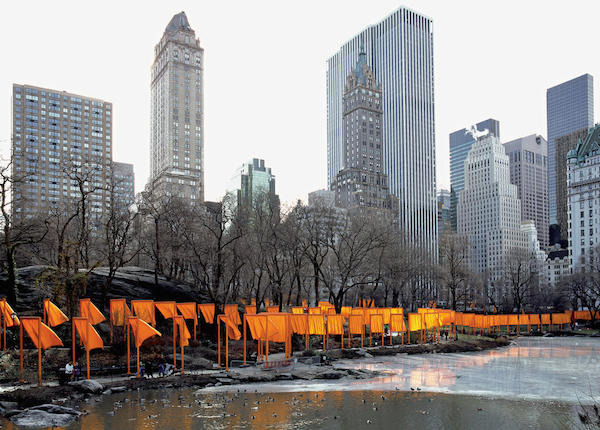
Christo and Jeanne-Claude The Gates, Central Park, New York City (2005).
Photo by Wolfgang Volz, courtesy of the artists.
Christo and Jeanne-Claude’s Central Park Bonanza The Gates might never have been realized without a push from Bloomberg. The artists conceived of the work in 1979, and pitched Mayor Ed Koch’s Commissioner of Parks and Recreation in 1980. No dice. “We tried again when Dinkins was elected, but it never worked out,” Christo told Interview in 2014. “After that was Giuliani, and it was ‘no way’ with him too.”
Bloomberg greenlighted the project, which in 2005 brought some four million tourists to the city in the typically slow month of February, generating an estimated $254 million in economic activity. Bloomberg had personally pushed for the project for nearly a decade, according to the New York Times.
He Nurtured the Growth of New York’s Chelsea Gallery District
Among repeated reports that Chelsea is over, and with a number of galleries moving to TriBeCa or Harlem or Brooklyn, it may be hard to remember that in the late ’90s the neighborhood was a haven for galleries fleeing overcrowded and expensive SoHo. Chelsea also offered former industrial spaces where there was plenty of light and room for larger and more ambitious projects. (Not to get too technical, but Bloomberg’s support came partly in the form of zoning changes involving air rights.)
He Initiated a Public School Arts Curriculum, the First in a Decade
As mayor, Bloomberg’s close aide Patricia E. Harris’s development of a mandated arts curriculum for public school students was the first of its kind since the city gutted arts education during the 1970’s fiscal crisis. American schools set their own curriculum state by state, so a President Bloomberg couldn’t dictate greater focus on the arts, but the president does hypothetically have a bully pulpit from which to vocalize their importance.
Via Bloomberg Philanthropies, He’s Already Taken a National View
All the above are just items from Bloomberg’s curriculum vita as New York’s mayor. But he’s already got practice in supporting national initiatives via Bloomberg Philanthropies. In 2014, his foundation started the “Public Art Challenge,” a unique competition to generate creative art projects in cities that address civic issues. The inaugural round generated $13 million in economic activity for participating cities in upstate New York (Albany, Troy, Schenectady), Spartanburg, South Carolina; Los Angeles, and Gary, Indiana. (That’s extra helpful, considering that the artists priced out of Bloomberg’s hypergentrified New York might have since been forced to trade Bushwick for Gary.)
He Is Not Afraid To Support Projects That Might Step on Sensitive Toes
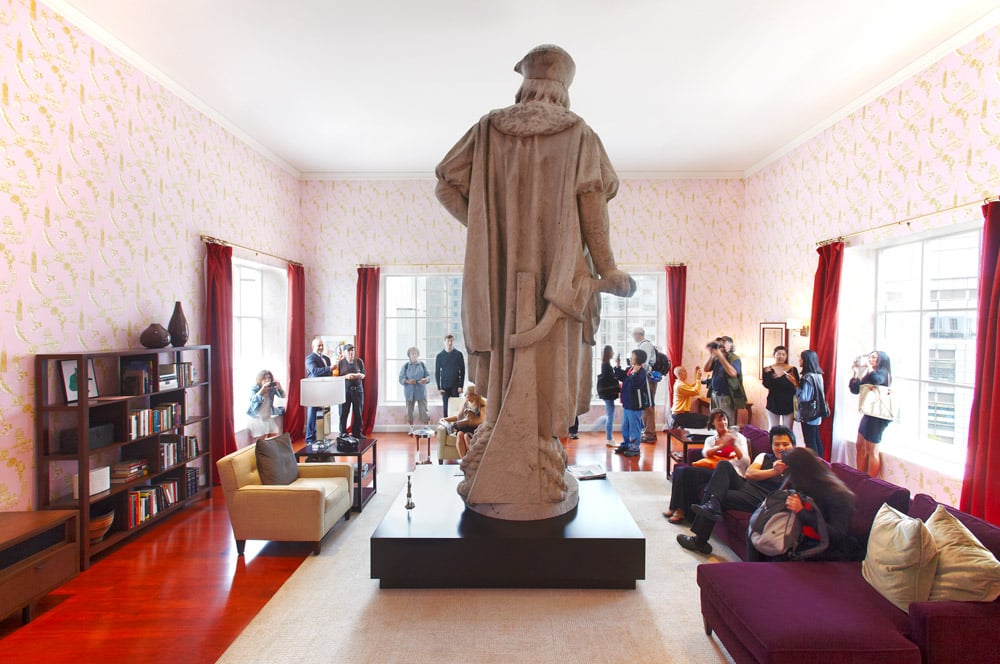
Tatzu Nishi, Discovering Columbus, 2012. A Public Art Fund project. Photo Tom Powel Imaging.
Some surmise that outgoing culture czar Tom Finkelpearl may have shown himself the door when the “She Built NYC” project, dedicated to erecting monuments to important women from New York City history, passed over Italian-American heroine St. Frances Xavier Cabrini, who earned the most nominations in an online poll, earning the ire of some Italian-American New Yorkers. The Usual Suspects actor Chazz Palminteri even said First Lady Chirlaine McCray was being racist in neglecting Cabrini.
Italian-Americans similarly had beef with Bloomberg back in 2012. Through city funding, Bloomberg threw his weight behind a Public Art Fund project that trod on certain sensitivities. For Discovering Columbus, artist Tatzu Nishi built a comfortable living room around the statue at the center of New York’s Columbus Circle. Even though Nishi gave the explorer a comfortable home, some Italian-Americans found it demeaning.
“I don’t believe they would do this with any other statue,” Andre DeMino of the Italian American One Voice Coalition told NBC New York. “Why does it have to be Italian Americans constantly being treated this way? What, are they going to have a TV going with ‘Jersey Shore’ at the same time?”
Hot-Button Issues Like Gun Violence and Climate Change Don’t Scare Bloomberg
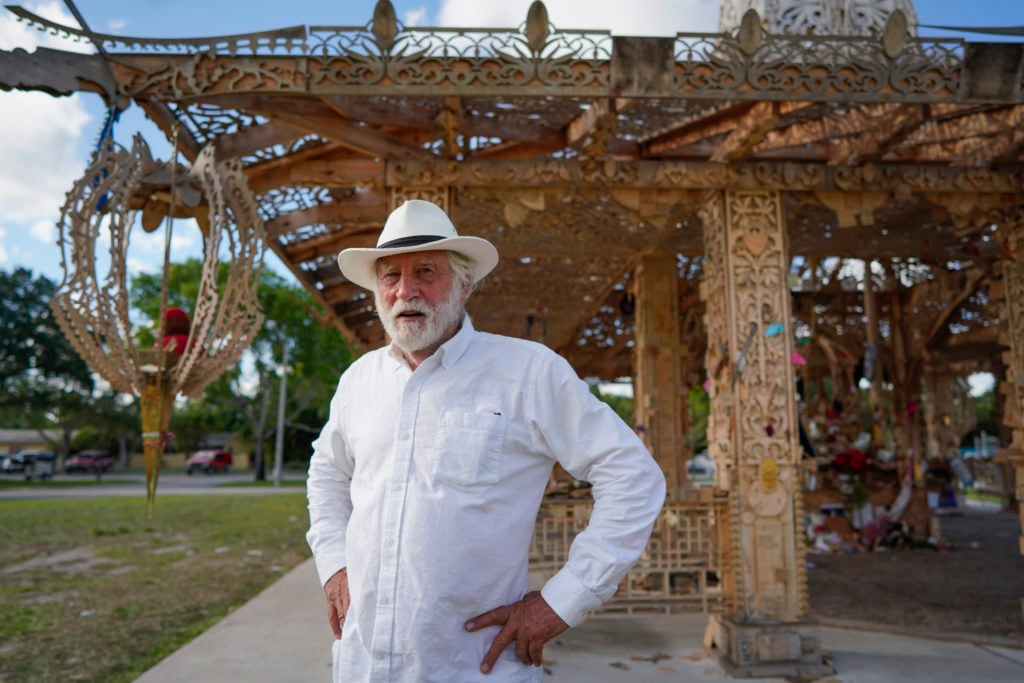
David Best with his sculpture Temple of Time (2019). The artwork, which honors the 17 victims of the 2018 Parkland, Florida, shooting, was set on fire May 19, 2019. Photo by Nicole Craine, courtesy of Bloomberg Philanthropies.
The 2015 Public Art Challenge sent artists like Theaster Gates and Erwin Redl to unexpected places, like Gary, Indiana and Spartanburg, South Carolina, respectively. The 2018 edition of that program bravely delved into subject areas like gun violence, climate change, and a century-old massacre that burned down a prosperous area of Tulsa, Oklahoma known as Black Wall Street.
The city of Coral Springs, Florida, in partnership with Parkland, for example, got a million dollars to support the project “Inspiring Community Healing After Gun Violence: The Power of Art,” ten months after the school shooting in Parkland. (And if hearing “Bloomberg” and “guns” in the same sentence rings a bell, it’s because the organization he helped to found, Everytown for Gun Safety, has scored a number of key legislative victories since forming in 2014.)
The Home of New York City’s Newest Multidisciplinary Arts Center Bears His Name

The Shed in Hudson Yards. Photo by Spencer Platt/Getty Images.
Not everyone loves the Shed, including Artnet’s own Ben Davis. But the home of this new $475 million arts venue bears Bloomberg’s name, owing to a $75 million personal gift to build the institution (in addition to $75 million in public money).
From Cornell’s Shiny New Tech Center to New Corporate Digs in London, Art is Front and Center
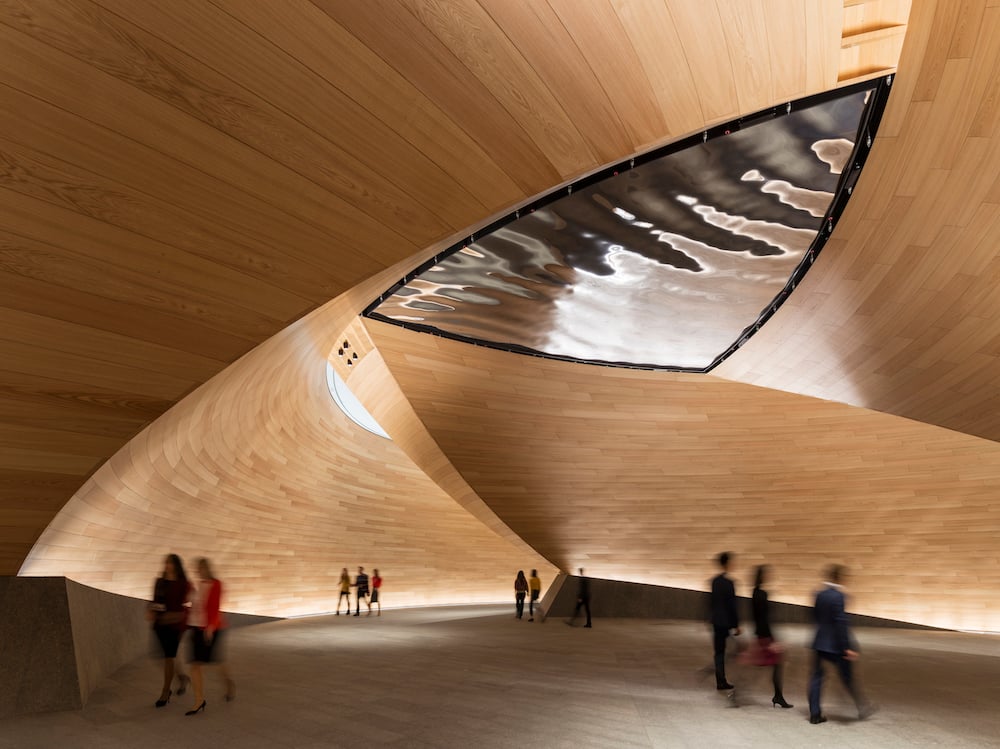
Olafur Eliasson, No future is possible without a past Located in the Vortex on the ground floor and at the base of the ramp on the secon floor at Bloomberg London. Photo by James Newton. Image courtesy of Bloomberg
At the Cornell Tech Center, opened on Roosevelt Island in 2017, more than one percent of the building’s overall budget of $130 million—which was funded by Bloomberg Philanthropies and the city—was invested in new artworks by Matthew Ritchie, Michael Riedel, Matthew Day Jackson, and Alison Elizabeth Taylor, as well as the restoration and relocation of historic WPA-era murals from the Goldwater Memorial Hospital that was previously on the site. There are also original site-specific commissions at the Emma and Georgina Bloomberg Center, chosen and curated by Bloomberg Philanthropies.
At Bloomberg’s new European corporate headquarters, opened in London in 2017, six contemporary artists—Cristina Iglesias, Olafur Eliasson, David Tremlett, Arturo Herrera, Pae White, and Michael Craig-Martin—were invited to develop site-specific works for both the interior and public realm. “The artists were encouraged to think about their projects holistically—not as isolated objects to be temporarily dropped into position,” according to a statement from Bloomberg Philanthropies.
Bloomberg Doesn’t Just Support Big-Name Institutions That Burnish His Image
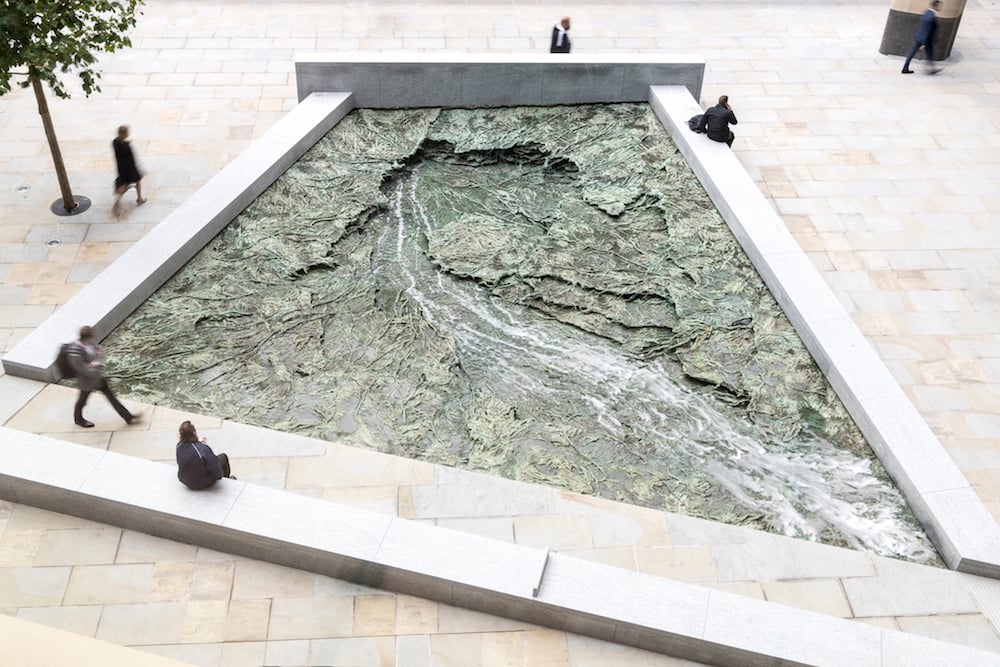
Cristina Iglesias, Forgotten Streams
Located in two of the public plazas around the Bloomberg London site.
Photo credit: Nigel Young/Foster + Partners. Image courtesy of Bloomberg.
Since 2011, Bloomberg has been quietly funneling a considerable portion of his fortune into helping small and midsize arts nonprofits flourish in cities across the US, through what’s now known as the Arts Innovation and Management (AIM) program. The initiative grew from Bloomberg’s belief that those more modest cultural organizations have been vastly under-appreciated in terms of their impact on metropolitan communities and economies. The program’s expansion in 2018 resulted in welcoming more than 200 new grantee organizations, which have been collectively promised over $43 million. The final 49 recipients, all based in Baltimore and Denver, were announced in September 2018. To date, more than 500 arts nonprofits have entered the program during its seven-year life, with Bloomberg Philanthropies’ investment so far totaling more than $108 million.
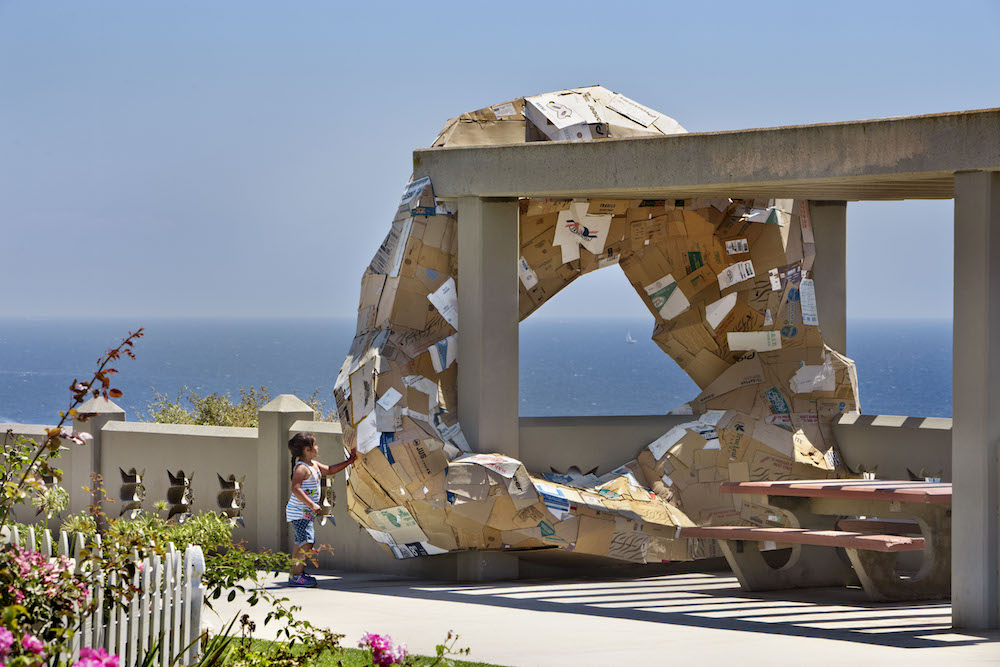
Current LA: A sculpture made of cardboard by artist Michael Parker frames San Pedro Bay, part of the Los Angeles Public Art Challenge project.
—Additional reporting by Eileen Kinsella
